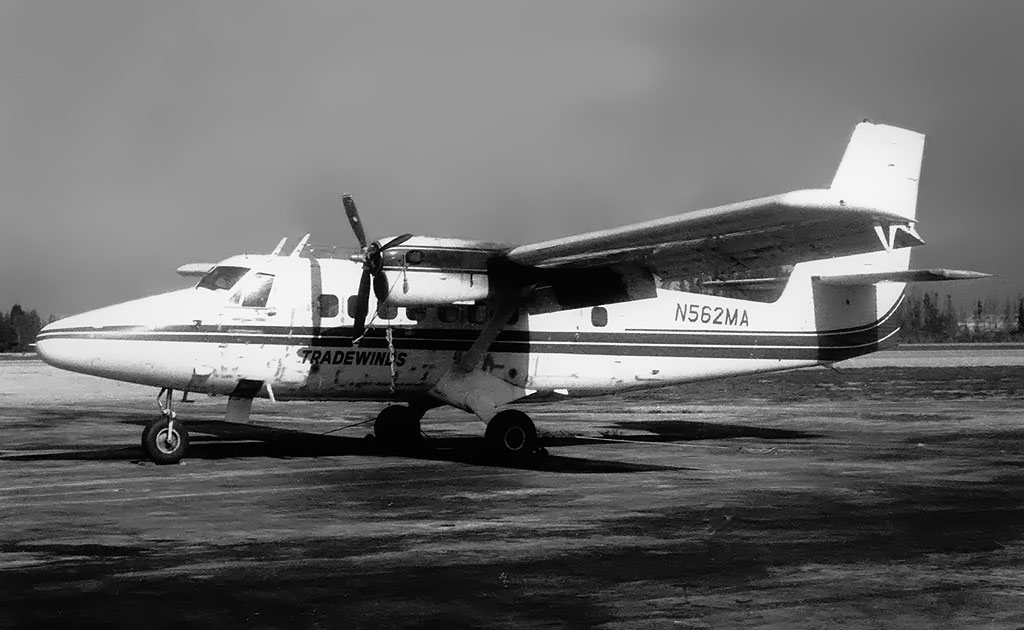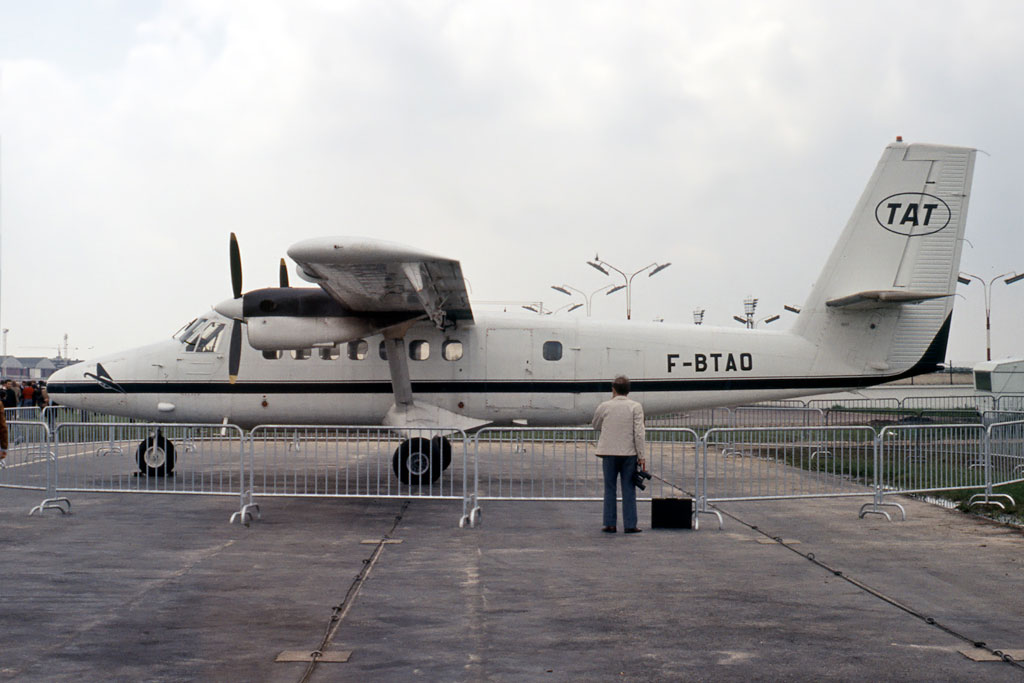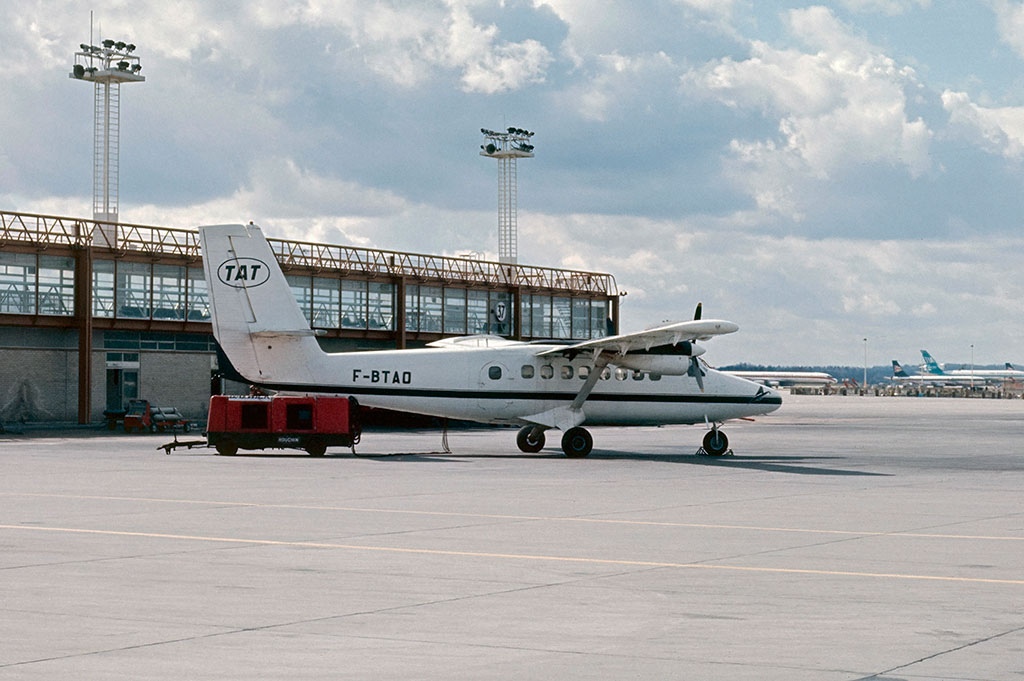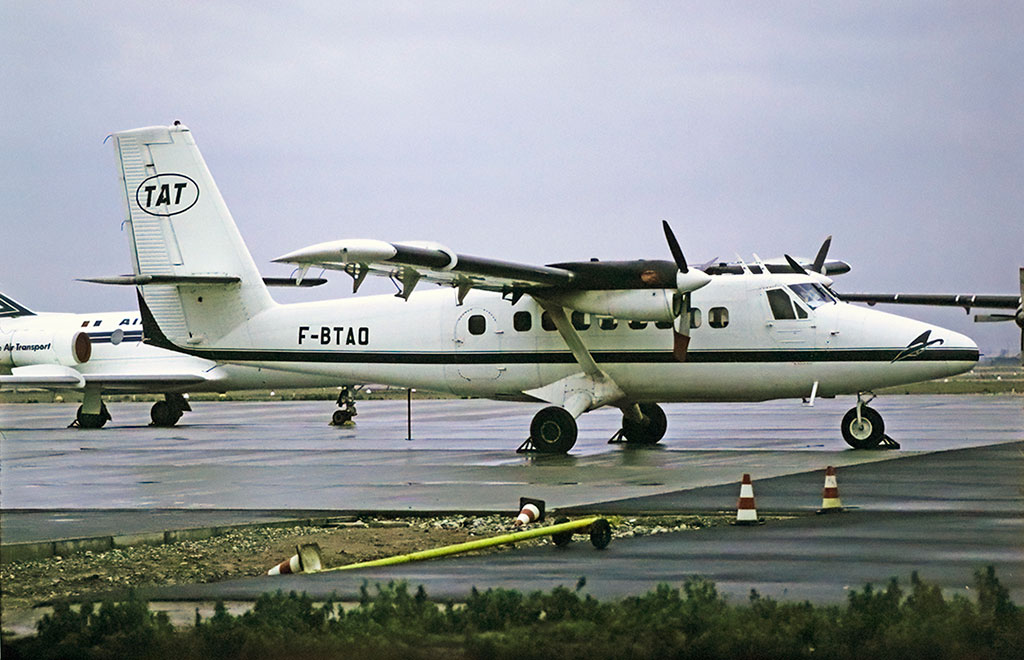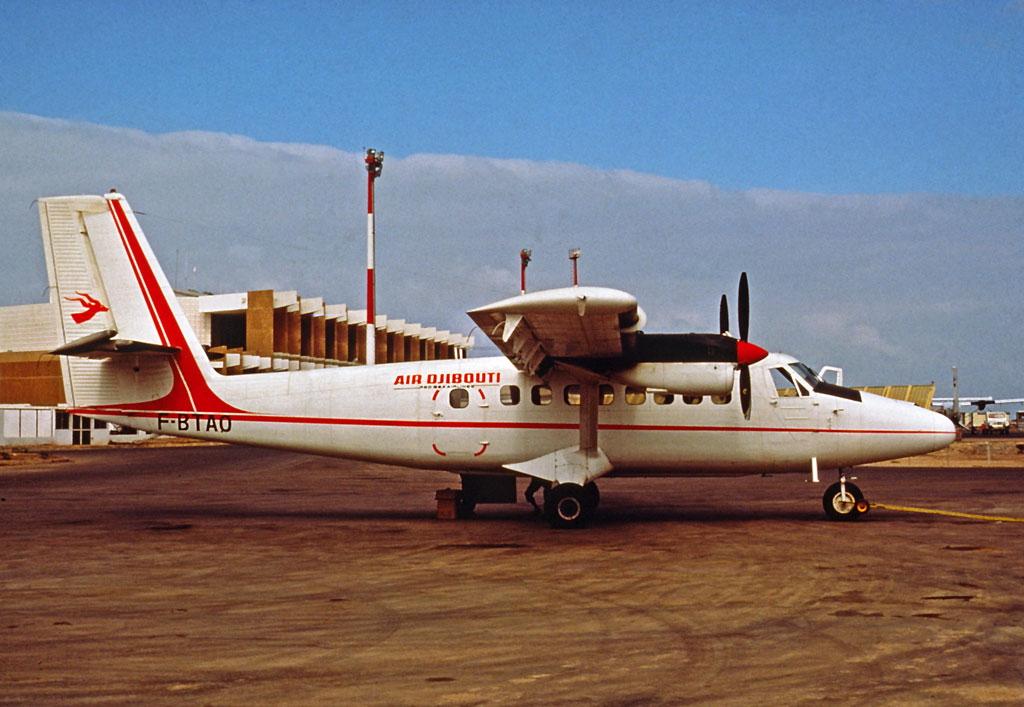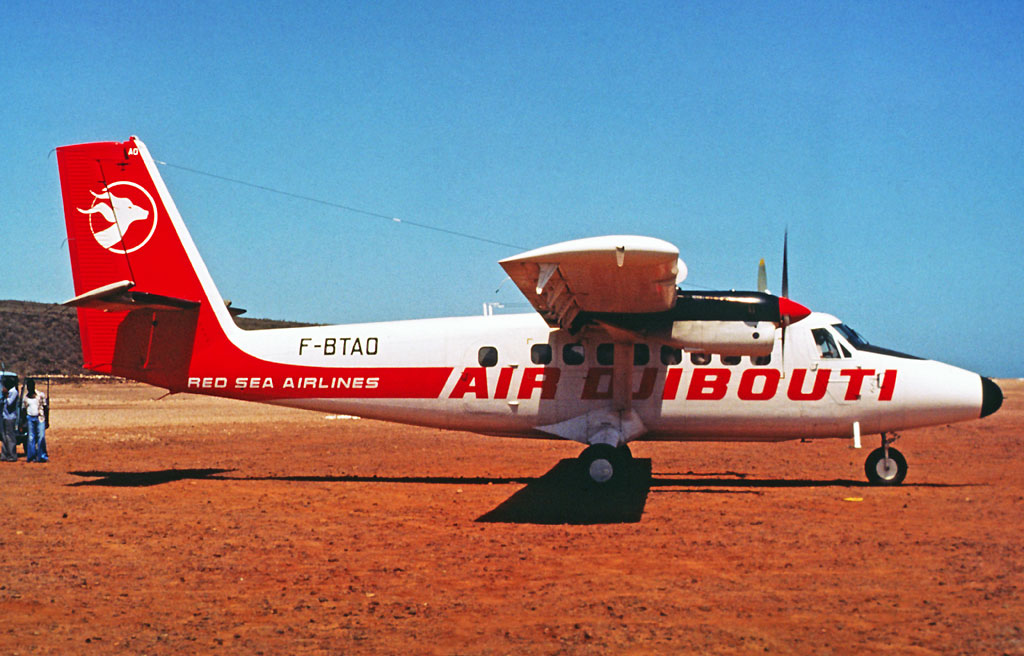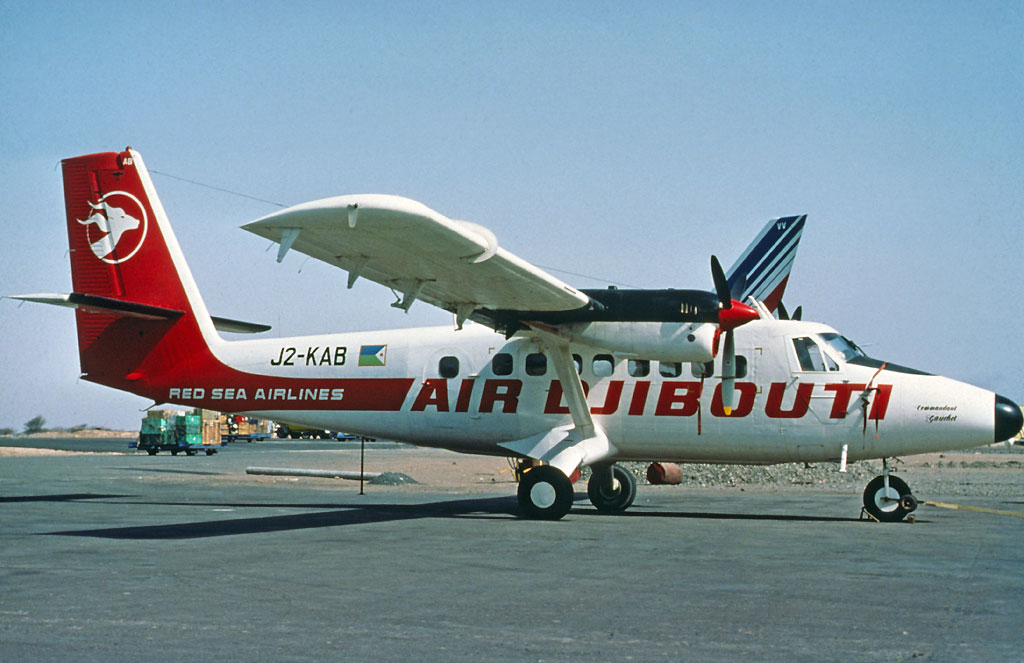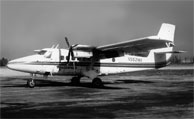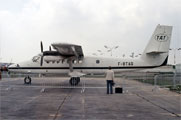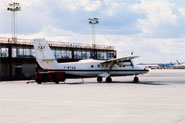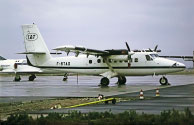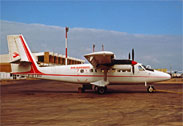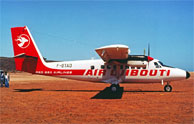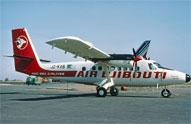|
• N562MA de Havilland Canada Inc., Downsview, ON. Rolled out date Jan-1969. First flight 30-Jan-1969.
• N562MA MAC - Miami Aviation Corporation. Delivered 20-Feb-1969.
• N562MA Tradeswind Airlines, New York, NY (Tradewinds Investment Corporation, New York, NY). Regd 20-Feb-1969. Delivered 14-mar-1969.
• N562MA Re-named Air Spur Corp, New York, NY. (Tradewinds Investment Corporation, Philadelphia, PA.). Regd 20-Feb-1969.
Airworthiness date: 11-May-1969.
• N562MA First Pennsylvania Banking & Trust, Philadelphia, PA. Repossessed 26-Aug-1970.
Note: Airspur filed for bankruptcy 13-Nov-1970.
• N562MA Returned to Tradewinds Investment Corporation (Tradewinds Airlines) New York, NY. Regd Sep-1970.
• N562MA Leased to Golden West Airlines Regd Sep-1970.
• N562MA MAC-Miami Aviation Corporation, Opa-locka, FL Returned Nov-1970.
• (N32TW) NTU, Tradewinds & Western 1970.
• N562MA Returned to Tradewinds & Western Regd 1971.
Note: Withdrawn from use at Opa-locka, FL & available for lease from Jan-1971.
• F-BTAO Sold to TAT - Touraine Air Transport, Tours, France, 06-Aug-1971. Regd18-Aug-1971.
Ferried via London-Gatwick, UK to Tours, France 18-Aug-1971.
• F-BTAO Sold to Air Djibouti, Djibouti, Somalia. Regd Sep-1975.
Incident:Tadjoura Airport, Somalia. 17 October 1977. Two gunmen entered an Air Djibouti Twin Otter shortly before the aircraft's planned take-off, shooting the pilot and one passenger. See also c/n 152, 153. It is not known currently which aircraft was involved.
• J2-KAB Air Djibouti, Djibouti, Somalia "Commandant Gauchet". Regd Jun-1980.
• F-GHXZ SAGA - Ste Generale de Trading, Troyes, France. Regd 30-Sep-1991.
• N37ST Sunshine Air Spares Inc., Fort Lauderdale, FL.
• N37ST Great Barrier Airlines, Auckland, NZ.
Noted at Fort Lauderdale-Executive, FL 28-Jan-1995, still painted as F-GHXZ
• N37ST Ted Mcill, Fort Lauderdale, FL., 01-Feb-1995. Canx 05-May-2015.
Accident: 300 km NE on Route to Honolulu, Hawaii 16-Mar-1995. At 03:15 hours Hawaiian standard time, the aircraft ditched into the Pacific Ocean about 175 nautical miles (nm) northeast of Honolulu, Hawaii, after the crew declared a fuel emergency. The aircraft floated for a few moments before sinking and the three persons onboard escaped uninjured and were rescued about 30 minutes later. The aircraft departed from Oakland, CA, at 1230 Pacific standard time on March 15,1995, for a 17-hour ferry flight to Hawaii. The final destination was Auckland, New Zealand. The owner and operator was to be Great Barrier Airlines in Auckland.
The crew reported experiencing fuel transfer problems and eventually declared an emergency approximately 14 hours into the flight when they were about 400 nm northeast of Honolulu. Several military aircraft responded to the distress call and intercepted the aircraft prior to its ditching. A nearby ship was directed to the site and rescued the occupants. The aircraft was equipped with 5 ferry tanks in addition to the normal aircraft forward and aft fuel tanks. The ferry tanks had a capacity of 1,076 gallons of fuel and the normal fuel system had a capacity of 366 gallons. All 5 ferry tanks could be gravity fed into either the aircraft's forward or aft fuel tanks. According to the crew, all fuel tanks were filled to capacity prior to takeoff.
The installer of the ferry fuel system indicated that they installed new, black 1/2- inch hose to the fuel distribution system and they were secured to their respective fittings with new camlock clamps. Prior to the take off from Oakland, the crew flew the aircraft from Hayward, California, which is located about 5 miles to the south of Oakland. While en route, each ferry tank was individually selected and fuel was observed to be flowing into the necks of both the forward and aft tanks. After landing at Oakland and during the course of refuelling, the ferry system was tested again and the pilots observed the fuel flowing strongly from each ferry tank to the main tanks. According to the ferry permit issued by the FAA for this aircraft, the maximum authorized takeoff gross weight was 15,053 pounds, or 30 percent over the original certificated weight of 11,579 pounds. The maximum quantity of fuel carried in the ferry tanks was not to exceed 7,209.2 pounds, and the center of gravity (cg) was not to exceed 203.54 inches forward and 216.32 inches aft of the datum plane.
There were two weight and balance forms prepared by the company who installed the ferry tank system. One form indicated the aircraft weighed 15,017.45 pounds, with a cg of 206.11 inches for the takeoff from Oakland. The second form indicated that with all the fuel tanks filled to capacity, the gross weight of the aircraft was 18,408.55 pounds. This weight did not include the third crewmember (170 lbs) and other cargo, such as the passenger seats and other miscellaneous items. The cg was calculated to be at 210.44 inches. The second weight was estimated by a registered engineer in New Zealand to be about 60 percent over the certificated gross weight. The crew had estimated that the time en route would be about 17 hours, with about 2 hours of fuel remaining.
The route of flight was from Oakland along R464 to Honolulu, a distance of approximately 2,250 nm. The en route winds were forecast to be a headwind component of 3 knots at 5,000 feet and 8 knots at 10,000 feet. The operator reported that the crew experienced an average headwind of 4.2 knots. The altitude of the flight ranged between 2,500 feet and 9,000 feet. In the crew's written statement, they indicated that they first noticed some minor difficulties with the fuel system when about 380 nm from Oakland. After a series of adjustments in selecting fuel tanks, a good fuel flow was observed from the ferry tanks into the main tanks and they continued the flight. When about 6 hours and 30 minutes from Honolulu and 1,600 pounds of fuel in the main tanks, the crew noticed a negative net fuel flow from the main tanks. They were not overly concerned at this time because the fuel consumption was 450 pounds per hour and they could access another 1,400 pounds of fuel from the ferry system to make Honolulu, provided the negative net fuel flow from the main tanks did not exceed 245 pounds. Over the next and subsequent half hours, the negative fuel flow was observed to be 90, 100, 120, then 130 or 260 pounds per hour. The crew said they focused on the No. 5 ferry tank which was over half full and had ceased draining. It was also the easiest to access and they began to transfer fuel from this tank to the No. 1 tank by the use of empty water bottles. They also jacked up the No. 4 tank onto some seats in an attempt to increase the head pressure. At this time, the indicated fuel consumption was now 290 pounds per hour and very little fuel was draining from the ferry system into the main tanks. The crew decided to shut down the port engine to conserve fuel and declared the emergency
About 1/2-hour prior to the ditching, the crew restarted the engine for stability and ditching purposes. The crew reported that at the time of ditching the fuel remaining in the ferry system was: 50 U.S. gallons in the No. 5 tank; 50 gallons in the No. 4 tank; 45 gallons in the No. 3 tank; 5 gallons in the No. 2 tank; and, 20 gallons in the No. 1 tank. They estimated this by visual inspection and by using an improvised dipstick. The engineer in New Zealand calculated the cg of the aircraft using the crew's estimated fuel remaining in the respective ferry tanks at the time of ditching. He indicated that the cg at the time of ditching was at 226.27 inches, and was considerably behind the permitted aft cg of 216.32inches for this aircraft. This engineer states that the residual fuel quantities suggests the ferry fuel system was not managed to maintain the aircraft center of gravity within allowable limits, a task made more difficult with the rear fuselage cargo.
In November 1995, the operator furnished the Safety Board a report they had prepared by a mechanical engineer in New Zealand. This report concluded that the crew statements were consistent, and there should have been sufficient fuel to complete the flight had the fuel been available to use. The aircraft had about 1.5 hours to go with at least 2.5 hours of fuel remaining. The report further states that the crew was unable to feed the ferry fuel into the main tanks because of the fuel pressure losses caused by the use of long lengths of small bore tube (3/8 inches 1/2 inch) This would not be apparent unless the ferry system had been tested by selecting individual tanks with low tank contents and observing the fuel flow. The brief flight test carried out by the crew did not test the critical condition which was the ability to empty the rear tanks. This report concluded that although the aircraft was operated well above the weight authorized by the FAA special ferry permit, this did not contribute to the accident. At the weight approved for the operation, the aircraft would not have been able to carry sufficient fuel for the flight. These two reports were sent to the aircraft manufacturer for comment. In their response (they stated that given a properly installed and tested long range fuel system, and with proper monitoring and management of that system, there should not have been a fuel feed interruption of flow between the long range fuel system and the aircraft main fuel tanks caused by the aircraft attitude during the flight. NTSB report LAX95LA137
• Written off after ditching in Pacific Ocean •
|
![]()
![]() click on arrows to navigate page by page.
click on arrows to navigate page by page.